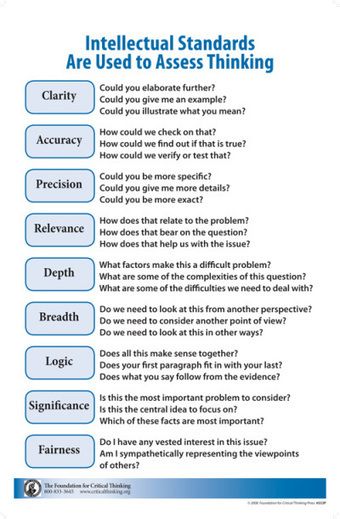This week we’ve focused on critical thinking using the model developed by the Foundation for Critical Thinking. By now you’re probably excited about the incredible potential that these tools hold…and a little overwhelmed. Where to start...
Get Started for FREE
Sign up with Facebook Sign up with X
I don't have a Facebook or a X account
 Your new post is loading... Your new post is loading...
 Your new post is loading... Your new post is loading...
|

Kelly Blair's comment,
August 8, 2013 8:52 AM
An excellent summary of effective teaching and learning strategies .

Readwritelearnwell's curator insight,
August 17, 2013 5:27 PM
Focuses on effective assessment for learning.
Michael Marinkovic's curator insight,
June 11, 2017 8:10 AM
I taught a lesson on blind spots, highlighting the blind spot that we have physically due to our optic nerve, as well as the spiritual blind spot that we have at times. The eye is a fantastic organ and yet the mind can be deceived very easily. When this concept is applied to teaching, a highly effective teacher needs to be aware of the blind spots in his or her classroom.
Self-evaluation is key, as is keeping your eyes “off the ball,” as the article suggests. We need to train ourselves to look past the obvious, the routine assessments that we use formally and informally to gauge student understanding. The article offers several strategies that a teacher could purposefully adopt in the classroom schedule that will ensure a more realistic view of concept comprehension. |











A few great ideas for critical thinking. I particularly liked the activity called "telephone" (not the listening game). Teachers can use all the strategies they can to help their students think better!